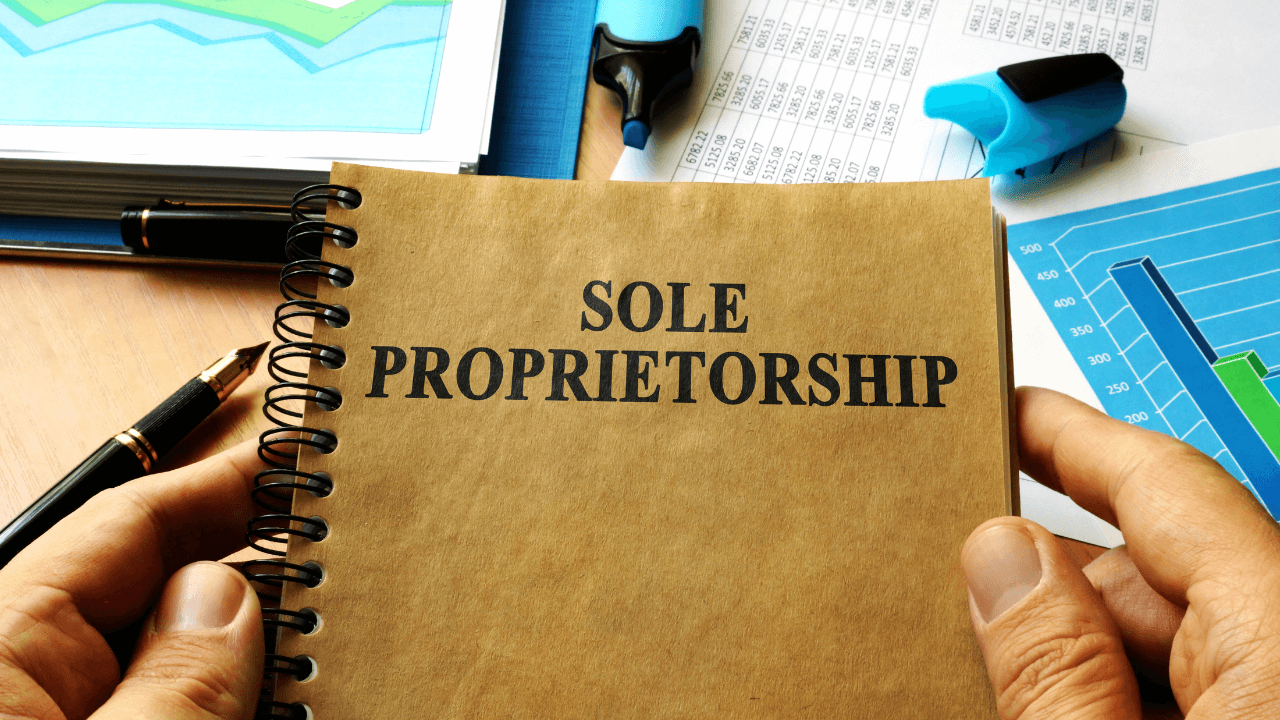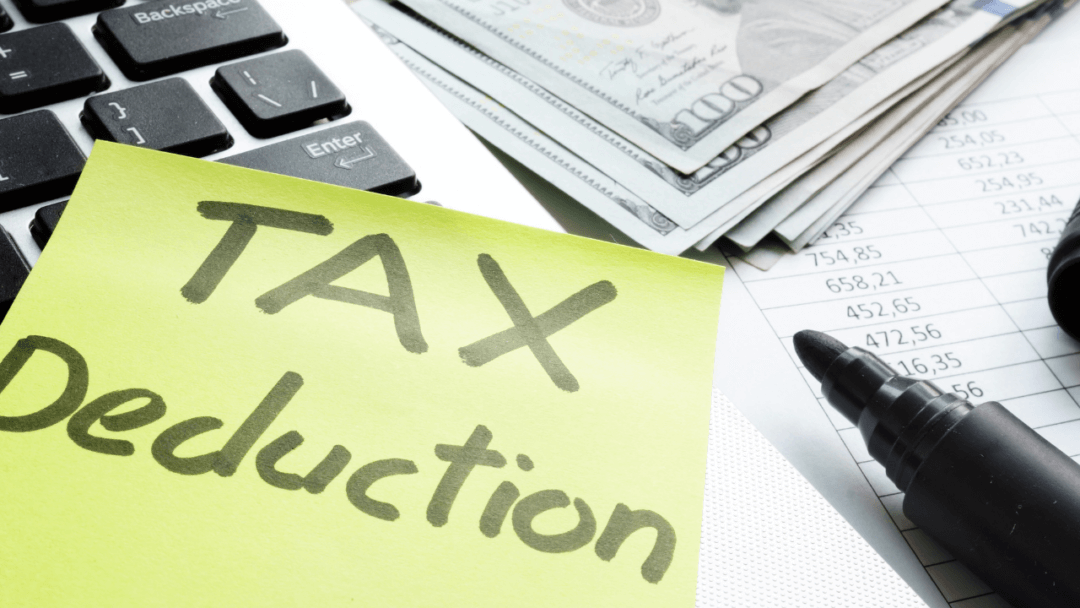Language:
Sole Proprietorship Taxes: A Complete Guide with Step-by-Step Instructions

If you’re a solo entrepreneur, managing taxes can feel like one of the trickier parts of running your business.
Unlike other business structures, sole proprietors have unique tax responsibilities that require careful attention.
Whether you’re just starting out or have been doing this for a while, understanding how to file your taxes correctly is essential to avoid penalties and make the most of available deductions.
This Sole Proprietorship Tax Guide will walk you through the process step-by-step, from filing the right forms to staying on top of quarterly tax payments, and maximizing deductions to lower your taxable income.
We’ll also dive into important areas like self-employment taxes, retirement contributions, and estimated tax payments so you’re well-prepared for tax season.
If you still find yourself with lingering questions or needing personalized tax advice, doola can help clear up any tax-related confusion and guide you toward the right decisions.
Let’s get started so you can head into tax season ready and confident!
What Is a Sole Proprietorship?
Before we jump into tax forms and deadlines, let’s make sure we’re crystal clear on what a sole proprietorship is — keeping things straightforward and easy to understand.
A sole proprietorship is the simplest business structure out there. If you’re running a business and haven’t created a formal legal entity, like an LLC or corporation, you’re automatically a sole proprietor. This means that you and the business are legally the same — there’s no separation.
So, while you get full control over the business, you’re also personally responsible for its debts and legal obligations.
The good news? It’s incredibly easy to set up. You don’t need to file complicated paperwork or meet specific legal requirements. Just start your business, and you’re a sole proprietor. However, the flip side is that the taxes are entirely your responsibility.
That means personal and business finances are treated as one for tax purposes, and any profits you make are reported on your personal tax return.
By understanding the basics of a sole proprietorship, you’ll be better prepared when it comes to managing your taxes and legal responsibilities.
Make sure to consult reliable sources, like IRS guidelines, and consider professional advice from our doola tax experts to ensure you’re handling everything correctly.
Sole Proprietor Tax Obligations: What You Need to Know
Sole proprietorship taxes are fairly simple, but getting them right is key to avoiding headaches down the line. Since there’s no legal separation between you and your business, your income and expenses are reported on your personal tax return.
Let’s break it down so it’s easy to follow.
Income Tax
As a sole proprietor, the money your business makes is considered your personal income. There’s no separate “business tax” like there would be for corporations, which simplifies things a bit.
You’ll report your profits on a form called Schedule C, which gets attached to your personal tax return. Basically, whatever your business makes gets taxed at your personal income tax rate.
But here’s the thing: while it’s nice to skip the separate business tax, it also means that keeping your records clean and accurate is quite important. Any mistakes in tracking income and expenses could affect your personal taxes directly.
Self-Employment Tax
This part can catch a lot of people off guard. Since you’re running the business yourself, the IRS treats you as both the employer and the employee. And what does that mean for taxes?
You’re responsible for paying self-employment tax, which covers Social Security and Medicare. Right now, that tax is 15.3% of your net income (after expenses).
Plus, you can deduct a portion of that self-employment tax when you file. But make no mistake, it’s still a significant amount, so you’ll want to budget for it.
Estimated Taxes
One major difference between employees and sole proprietors is how taxes are paid. If you have a regular job, taxes are automatically taken out of each paycheck. As a sole proprietor, no one’s doing that for you. You have to handle it yourself.
That’s where estimated taxes come in.
You’re expected to pay your taxes quarterly throughout the year, rather than waiting until the end. These estimated tax payments cover your income tax and self-employment tax. If you don’t make these payments on time, you could face penalties, and no one wants that.
Why Tax Planning Matters for Sole Proprietors

Tax planning isn’t just something you think about in April—it’s a year-round strategy that can significantly impact your financial success as a sole proprietor.
Here’s why it matters and how you can make the most of it.
1. Minimize Tax Liabilities
One of the biggest benefits of tax planning is reducing the amount you owe. With the right approach, you can identify deductions and credits that apply specifically to your business, such as home office expenses, equipment purchases, or business travel. These deductions lower your taxable income, meaning you keep more of your hard-earned money.
2. Avoid Surprises with Estimated Taxes
As a sole proprietor, you don’t have an employer withholding taxes from your paycheck. That means you’re responsible for paying estimated taxes on a quarterly basis. Proper tax planning helps you avoid the nasty surprise of owing a large sum at the end of the year. By forecasting your income, you can accurately estimate and pay your taxes each quarter to avoid penalties.
Pro tip: Use IRS Form 1040-ES to calculate your estimated payments. Missing these deadlines can result in penalties, so you need to be very careful about that..
3. Maximize Deductions
Strategic tax planning allows you to maximize deductions and write-offs. For example, did you know that you can deduct a portion of your self-employment tax? Also, if you use a home office or vehicle for business purposes, you can deduct those expenses, but only if you meet specific IRS requirements.
Additionally, keep detailed records and receipts of all business-related expenses. Tools like accounting software or a bookkeeping advisor can help track everything throughout the year, making tax time less stressful.
4. Plan for Retirement
As a sole proprietor, saving for retirement is just as important as running your business. The good news is that you have access to special retirement plans like SEP IRAs or Solo 401(k)s. These plans help you save money for the future while offering a tax break right now. Here’s how it works:
When you contribute to one of these retirement accounts, the money you put in is tax-deferred — which means you don’t pay taxes on it until you withdraw the funds in retirement.
This reduces your taxable income for the year, meaning you owe less in taxes. For example, if you made $60,000 in profit but contributed $5,000 to a SEP IRA, you would only be taxed on $55,000.
The more you contribute (within IRS limits), the more you save on taxes today — and you’re setting yourself up with a financial cushion for the future.
Pro tip: Working with a financial advisor from doola can help you figure out the best retirement plan for your business and personal goals.
5. Stay Compliant with Tax Laws
Tax regulations are constantly changing, and staying on top of new rules is essential to avoid mistakes and penalties. A seasoned tax advisor can help ensure you’re compliant with the latest tax laws, including updates to the Sole Proprietor Tax Filing Instructions. Whether it’s new tax credits or changes to deduction limits, a professional can keep you informed and on the right track.
Pro tip: Set aside time each quarter to review tax-related changes that might affect your business. Ignoring them can cost you more in the long run.
6. Seek Professional Guidance
Especially if your business is growing, tax planning can get complicated. A tax advisor can guide you through the maze of tax rules, help you strategize for the future, and ensure you’re taking advantage of all potential savings. They’ll also help ensure your paperwork is filed correctly and on time, reducing the risk of audits or fines.
If hiring a tax advisor feels too costly, consider meeting with one at least once a year to review your financials and get personalized advice. Their expertise can often save you more than the cost of the service.
Step-by-Step Sole Proprietorship Taxes: Your Filing Instructions
Now, let’s break down the actual process of filing taxes as a sole proprietor. We’re talking about what forms to use, when to file them, and how to avoid common mistakes. Here’s your step-by-step Sole Proprietorship Taxes guide.
Step 1. Open a Business Bank Account
One of the first steps to managing your finances as a sole proprietor is separating your personal and business expenses. Even though a sole proprietorship doesn’t require a formal business structure, opening a business bank account is essential for keeping accurate records and simplifying tax filing.
It also makes it easier to deduct business expenses without mixing personal spending into the equation.
Having a separate business bank account will also ensure you have clean, organized financial records, which are crucial when preparing your Sole Proprietor Tax Filing Instructions.
Step 2. Gather Your Income Records
Start by collecting all the records of income you’ve earned during the year. This can include invoices, receipts, bank statements, and any 1099 forms you received from clients. Your gross income, the total amount you earned, will be reported on Schedule C.
Step 3. Collect Your Expense Receipts
The beauty of being a sole proprietor is that you can deduct a wide range of business expenses. These reduce your taxable income, so keep meticulous records. Deductible expenses can include office supplies, business travel, equipment, and even part of your home if you work from there (hello, home office deduction!).
The more expenses you can prove, the lower your taxable income.
Step 4. Complete Schedule C
Schedule C is the bread and butter of sole proprietor tax filing. This form allows you to report your business income and expenses, and it’s where you calculate your net profit or loss. Don’t worry, the form is more straightforward than it sounds. You’ll list your gross income, subtract your deductible expenses, and the result is your net income.
Keep in mind: Net income is the number that will be used to calculate your self-employment taxes and personal income taxes. Keep an eye on that number!
Step 5. Pay Self-Employment Taxes
Next up, self-employment taxes. Remember, you’re both employer and employee, so you need to pay both the employer and employee portions of Social Security and Medicare taxes. Form SE (Self-Employment Tax) helps you calculate this amount.
Use the net income from Schedule C to determine how much you owe.
Pro Tip: Don’t forget, you can deduct half of your self-employment tax from your income when calculating your income tax. Every little bit helps!
Step 6. Calculate and Pay Estimated Taxes
If your net earnings for the year are significant, you’ll likely need to pay estimated taxes. This is especially crucial for first-time filers, as missing these payments can result in penalties. Estimated taxes are typically paid quarterly using Form 1040-ES.
The IRS provides a worksheet to help you calculate how much to pay each quarter.
Pro Tip: Set reminders for estimated tax deadlines (April, June, September, January). Missing a payment is an easy mistake that can cost you later.
Step 7. File Your Personal Tax Return
Finally, it’s time to file your personal tax return. You’ll use Form 1040, the standard individual tax return form, to report your personal and business income. Be sure to attach Schedule C to report your business income and expenses, and Form SE to report your self-employment taxes. The deadline for filing is typically April 15, but if you need more time, you can file for an extension.
Common Deductions for Sole Proprietors

One of the perks of being a sole proprietor is the ability to deduct business expenses. The IRS allows you to subtract certain expenses from your income, which lowers your tax bill. Here’s a list of common deductions:
✅️ Home Office Deduction: If you work from home, you can deduct a portion of your rent, utilities, and even internet bills. Just make sure the space is used exclusively for business.
✅️ Business Meals: You can deduct 50% of the cost of business meals, as long as they’re directly related to your work.
✅️ Vehicle Expenses: If you use your vehicle for business purposes, you can deduct either the standard mileage rate or actual expenses like gas and maintenance.
✅️ Office Supplies: Pens, paper, printer ink — all of it can be deducted.
✅️ Health Insurance Premiums: If you pay for your own health insurance, you can deduct the premiums.
Avoid These Common Tax Mistakes
Now that you know how to file your taxes, let’s talk about some common tax mistakes to avoid.
❌ Not Keeping Accurate Records: Accurate, detailed records are your best friend during tax season. Keep all your receipts and invoices organized throughout the year so you’re not scrambling when it’s time to file.
❌ Forgetting About Self-Employment Taxes: It’s easy to overlook self-employment taxes, but they make up a significant portion of what you owe. Be sure to calculate and pay them quarterly.
❌ Missing Deadlines: Late filings or missed estimated tax payments can result in penalties. Set reminders for all tax deadlines to avoid unnecessary costs.
❌ Not Deducting Business Expenses: Some new sole proprietors are hesitant to deduct business expenses, thinking it will raise red flags with the IRS. As long as you have receipts and accurate records, go ahead and claim those deductions.
Navigate Tax Season with Confidence With doola

As we mentioned before, being a sole proprietor managing your taxes can often feel overwhelming. There are a lot of critical and moving parts — deductions, estimated taxes, and deadlines. It’s easy to wonder if you’re handling everything correctly or missing out on savings.
That’s where doola can step in to make things easier. We understand that you’re wearing all the hats, and taxes are just one more thing on your already overflowing to-do list.
We make sure the financial side of your business doesn’t get left behind. Our experts can handle everything from bookkeeping to tax preparation, so you can focus on what you actually care about. Instead of worrying if you missed a deadline or forgot a deductible expense, let us step in to manage the intricate details.
With our help, you’re not just staying compliant; you’re optimizing every step to make tax time smoother and less stressful.
So why struggle through tax season alone? Book a free consultation with doola today.




